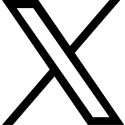Low Dose Naltrexone (LDN)
Clinical studies have shown that Low Dose Naltrexone benefits Fibromyalgia. For example, a crossover
study of 10 women diagnosed with fibromyalgia
obtained a 30% reduction in symptoms, and also noted that
"baseline erythrocyte sedimentation rate predicted over 80% of the variance in drug response.
Individuals with higher sedimentation rates (indicating general inflammatory processes) had
the greatest reduction of symptoms in response to low-dose naltrexone" [Younger2009 🕮 ]
A follow-up randomized double-blind placebo-controlled crossover study of 31 women found that
32% of the participants had a significant reduction in pain and a significant reduction in either
fatigue or sleep problems [Younger2013 🕮 ].
In another study of 8 women with an average age of 46 years and symptom duration of 14 years,
an average reduction of pain by 15% and overall symptoms of 18% was obtained after a treatment
duration of 8 weeks. A reduction of inflammatory cytokines was also noted [Parkitny2017 🕮 ]
The mechanism of action of LDN in treating Fibromyalgia appears to be via Toll-like receptor 4
antagonism and/or opioid growth factor antagonism [Toljan2018 🕮 ].
See also [Yang2023 🕮 ]
Dr. Weyrich has been trained to use Low Dose Naltrexone (LDN) and offers these
protocols as a complement to other therapies; however at this time Dr. Weyrich has only
treated two confirmed cases of Fibromyalgia using LDN:
- In the first case the patient did not adequately taper completely from high doses of opiates
and therefore did not tolerate the treatment.
Dr. Weyrich remains optimistic that a more prolonged wash-out period would have resulted
in successful treatment.
- In the second case, the patient reported significant improvement in symptoms and remained on the
treatment (as of 08/19/2019)
See testimonial
Dr. Weyrich strongly believes that LDN is a very beneficial intervention for treating Fibromyalgia,
and he is actively recruiting patients.
Please see What is Low Dose Naltrexone?
for more information.
Immune System Balancing
[McCulley2018, pp 180, 223-228] reports that Fibromyalgia is not a true
autoimmune disorder because there are no antibodies, but since it has other features
of immune dysregulation, proposes an approach to treating this disease, which should be
supervised by a properly trained medical professional.
Dr. Weyrich has considerable interest in this topic, but has
not treated any cases of Fibromyalgia
with Immune System Balancing.
Please see What is Immune System Balancing?
for more information.
Neuro-Gen High-Performance Neuromodulation (HPN)
HPN has been reported to be useful for treating Fibromyalgia
[Snook].
Dr. Weyrich has been trained to use Neuro-Gen High-Performance Neuromodulation
system by it's inventor, Corey Snook.
However, Dr. Weyrich has not treated any cases of Fibromyalgia
with this technique.
Please see
What is Neuro-Gen High-Performance Neuromodulation?
for more information.
Neurofeedback
Neurofeedback may be useful for treating Fibromyalgia.
Dr. Weyrich has been certified in neurofeedback since 2008, and more recently
completed an additional residency training program at ADD Clinic of Scottsdale, AZ.
However, Dr. Weyrich has not treated any cases of Fibromyalgia with this
technique.
Please see What is Neurofeedback?
for more information.
Neurotransmitter Balancing
Neuro Research [Hinz2015] reports that Fibromyalgia
can be benefited by balancing neurotransmitter levels in the body.
Dr. Weyrich has been trained in neurotransmitter balancing protocols, but has not treated
Fibromyalgia using this technique.
Please see What is Neurotransmitter Balancing?
for more information.






